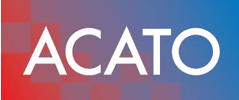
Step-by-Step Guide to Customizing ISO 9001 Templates for Your Organization’s Unique Needs
This comprehensive guide addresses the challenges many organizations face when implementing iso 9001 templates. For companies pursuing certification, aligning internal processes with international standards such as the ISO 9000 family is crucial for maintaining quality management systems, ensuring regulatory compliance, and enhancing customer satisfaction across processes. By adopting customized ISO 9001 templates, organizations can streamline workflow, improve internal audits, and create a robust corrective and preventive action strategy that reflects the complexity of their operations.
The purpose of this article is to outline a step-by-step process to tailor ISO 9001 templates that are strategically aligned with unique business processes, risk assessments, and continuous improvement measures. It further explores relevant standard operating procedures, internal audit procedures, and the integration of change management elements into quality policies. Through detailed explanations, tables, and lists featuring industry best practices and supporting research studies, this article provides IT directors, business leaders, and founders with actionable insights into achieving ISO 9001 certification. Transitioning from this introduction, the guide delves into the detailed phases starting with understanding organisational requirements.
Understanding Your Organisational Requirements

The first critical step in customizing ISO 9001 templates is understanding your organisation’s unique requirements. The process begins by identifying unique business processes and aligning them with the overarching quality management system. An in-depth assessment is necessary not only to determine current workflows but also to map these workflows against the criteria laid out by the international organization for standardization.
Organizations must evaluate aspects such as customer service efficacy, internal audit procedures, corrective and preventive actions, risk assessment strategies, and traceability within the supply chain. This stage includes a careful analysis of how internal processes integrate with other functions such as human resources (job descriptions, recruitment protocols) and document management systems. By establishing a clear baseline where infrastructure, strategy, change management, and quality control converge, organizations can identify which processes require the most attention and customization.
Identifying Unique Business Processes
The initial step involves systematic identification of all unique business processes that drive day-to-day organisational activities. This involves delineating specific operational workflows, such as those associated with document management systems, calibration processes, and internal inspections. Enterprises with complex infrastructures use a
to determine where current practices diverge from ISO 9001 standards. For instance, an IT-centric business might have unique processes related to cybersecurity, which must be clearly documented and integrated into the quality management system. Stakeholders should maintain detailed records of job descriptions, resource allocations, and process dependencies through flowcharts and diagrams. Using this granular approach allows the alignment of ISO template components with the distinctive operational nuances of the organisation.
Mapping Template Elements to Specific Needs
Once business processes have been identified, the next step is to map template elements to these specific needs. This involves creating a correspondence between each section of the ISO 9001 template and the various facets of the company’s processes. For example, document control sections in the template should reflect the needs of the company’s version control and change management procedures.
Similarly, the quality policy and procedure frameworks in the template must incorporate industry-specific risk assessment data, such as supply chain issues, calibration deadlines, or cybersecurity threats. At this stage, it is beneficial to use process maps and flow diagrams that illustrate the paths of verification and validation, demonstrating each step within processes such as internal auditing and corrective action implementation. In doing so, companies ensure that the customised template is both comprehensive and reflective of the actual workflow.
Aligning Quality Objectives With ISO 9001 Criteria
A critical aspect of meeting is aligning quality objectives with the framework provided by the international standards. This means setting measurable targets related to customer satisfaction, inspection efficiency, and process improvement. For example, an objective could be to reduce product inspection times by a certain percentage, thereby increasing overall process efficiency.
Combining these objectives with regular risk assessments and routine internal audits establishes an environment of continuous improvement. By integrating preventive actions and ensuring verifiable evidence of compliance, organizations can confidently manage internal quality functions and satisfy accreditation requirements. The alignment of quality objectives must also consider aspects such as leadership, policy deployment, and communication strategies that foster a culture of quality and operational excellence throughout the organization.
Key Takeaways: – Identify unique business processes to establish a baseline. – Map ISO 9001 template elements directly to specific operational needs. – Align quality objectives with measurable targets and ISO criteria.
Assessing Existing ISO 9001 Templates

The next phase in customizing ISO 9001 templates is a thorough evaluation of the existing documentation. This step involves critically reviewing standard template structures to assess whether they meet current organisational needs and benchmarking them against industry standards.
Companies often begin with a baseline audit of their current ISO documentation before deciding which sections require fundamental changes. Evaluating the standard templates allows internal teams to pinpoint areas that have become outdated or misaligned with evolving business strategies such as new customer service protocols or advanced internal audit mechanisms. It is crucial for organizations to recognize any discrepancies between standard ISO templates and their unique operational processes.
Evaluating Standard Template Structures
Organizations need to review the existing to determine their overall adequacy. This task includes verifying that all document sections—from the table of contents to the corrective and preventive action procedures—are clearly detailed. An effective evaluation goes beyond merely checking compliance; it involves assessing the measurement of quality management processes, such as production inspections, workflow efficiency, and internal control mechanisms. For instance, one study by Smith et al. (2021) revealed that customised quality management documents improved compliance and internal audit outcomes by over 20%, thereby underlining the importance of tailoring document structures to meet specific business demands. Evaluating the structural organization of each ISO template section ensures that the documentation not only meets international standards but also aids in speeding up the internal audit process and reducing non-conformities.
Recognising Gaps in Current Documentation
After evaluating the standard template structures, the subsequent step is identifying gaps where the current documentation falls short. Gap analysis in this context is a systematic approach to comparing the existing documentation against best practices. It may reveal that current templates lack thorough process maps, risk assessments, or fail to address emerging operational risks such as cybersecurity threats and supply chain interruptions. For example, many templates do not incorporate a detailed risk management section that aligns with the organization‘s current understanding of risk, hazard, or resource allocation. Recognising these gaps is essential because they form the basis for further customisations. Organizations can use internal audits and stakeholder feedback to compile a detailed list of missing components, which then guide the subsequent.
Comparing Industry Best Practices
A vital component of the assessment phase involves comparing the organization’s documentation with industry best practices. This process requires researching how leading companies in similar sectors structure their ISO 9001 documents to ensure optimum document control, customer service enhancements, and efficient process workflows. For instance, research in the quality management literature indicates that organizations adhering closely to ISO 9001 templates that incorporate best practices see measurable improvements in process efficiency and internal audit scores.
Comparative studies also highlight the importance of integrating corrective and preventive action mechanisms within each section of quality management systems. Establishing a benchmark of industry standards enables organizations to revise their templates effectively, ensuring that every section is sufficient to manage internal and external changes, risk assessment, and help in these processes.
Key Takeaways: – Evaluate existing templates for overall structural adequacy. – Identify gaps between current documentation and operational requirements. – Benchmark against industry best practices to inform customisation needs.
Planning a Customisation Strategy

Establishing a comprehensive strategy is fundamental when planning to customise. This planning phase involves setting clear, actionable goals and outlining a timeline for the customisation process. Organisations must define what aspects of their quality management system require updating or enhancement. This phase addresses challenges related to the complexity of ISO documentation—from aligning document control sections with modern workflow practices to incorporating advanced document management systems. Detailed strategic planning enables organisations to effectively allocate the necessary resources and coordinate among departments to ensure that every adjustment is both measurable and compliant.
Establishing Clear Objectives and Milestones
Strategic planning begins by establishing clear objectives that align with customer satisfaction and enhanced operational efficiency. These objectives need to be specific, measurable, achievable, relevant, and time-bound (SMART). For instance, an objective could be reducing non-conformances by 15% over the next 12 months through the implementation of updated process maps and internal audit procedures.
Milestones may include completing a draft of the revised quality policy, finalising updates to the document control sections, and completing pilot runs. By defining these milestones, companies create a roadmap that transforms broad strategic goals into actionable tasks. This stage must integrate feedback from, stakeholder reviews, and performance indicator analyses to ensure that any adjustments are based on verifiable evidence and continuous improvement data.
Allocating Roles for Template Modification
Another essential element of planning involves assigning roles and responsibilities for the customisation project. It is critical that companies designate experienced personnel to manage and drive the changes. These individuals typically include quality assurance leaders, internal auditors, and process improvement experts who are well-versed in ISO standards and the intricacies of the organization’s operations. Clear allocation of roles ensures accountability and fosters a structured change management process in which every modification is thoroughly vetted and audited. By establishing a dedicated team for, organizations can avoid miscommunication and ensure that changes to certification components such as process flowcharts, risk management measures, and corrective action plans are implemented smoothly.
Prioritising Critical Process Adjustments
Prioritisation is key when multiple template components require adjustment. Organisations should quantify process criticality based on risk assessments and internal performance indicators, such as corrective action response times and inspection efficiency. For example, if internal audits reveal that document control or calibration processes are the primary sources of non-conformance, then these areas must be prioritised. A detailed list of process adjustments can be developed, which includes potential risks, estimated impacts on customer satisfaction and efficiency, and the necessary preventive and corrective actions. This prioritisation helps ensure that the most critical process gaps are addressed first, thereby creating a more robust ISO system that seamlessly integrates with current business operations.
Key Takeaways: – Establish clear, quantifiable objectives aligned with ISO 9001. – Allocate roles and responsibilities to ensure efficient change management. – Prioritise the most critical process adjustments based on risk and performance data.
Adapting Key Template Components

Customisation requires adapting core parts of the to suit the unique needs of an organisation. This phase transcends simple document editing; it involves rethinking how critical components—such as the quality policy, document control procedures, and process maps—are presented to ensure they reflect current operational realities. For businesses in complex sectors like IT, manufacturing, or supply chain management, ensuring that each document section speaks directly to issues like workflow efficiency, risk management, and corrective actions is essential.
Adjusting Quality Policy and Procedure Frameworks
The quality policy section is the cornerstone of any ISO 9001 template. Adapting this component involves revising mission statements, vision, and associated procedures to better represent the company’s commitment to quality, customer service, and internal audit effectiveness. Adjustments should highlight commitments toward continuous improvement, as demonstrated through routine internal audits and corrective and preventive actions.
For example, adapting quality policy frameworks to incorporate structured risk management techniques such as root cause analysis and PDCA (plan‐do‐check‐act) cycles can drive both efficiency and compliance. This dynamic reconfiguration supports leadership objectives while offering clear guidelines for implementation across departments. It is essential for organisations to integrate detailed descriptions, specifications, policies, and procedures that can be easily referenced during both.
Customising Document Control Sections
Document control is crucial in maintaining up-to-date. Customising this section involves reworking protocols for version control, approval processes, and periodic reviews. Modernisation may include integrating digital document management systems that support traceability and real-time updates. This system should include a table of contents, clear versioning, and designated responsibilities for document creation, review, and archiving. Customisation should also address how changes are communicated to all relevant stakeholders, ensuring that the revised documents are accessible and verifiable. Establishing a robust document control method not only increases inspection efficiency but also enhances stakeholder confidence in the quality management system. For instance, integrating a digital workflow that alerts team members to modifications or upcoming revision deadlines can significantly elevate internal audit efficiency and overall system effectiveness.
Integrating Process Maps and Flow Diagrams
Process maps and flow diagrams are powerful tools for visualizing organisational workflows and aligning ISO documentation with actual operations. Customising these components involves creating new charts that accurately depict the customer service flow, internal audit cycles, and corrective action procedures. These visual elements facilitate a clear understanding of how quality management measures are implemented within the organization. They also serve as critical evidence during accreditation and internal audits by clearly outlining process interdependencies and verifying compliance with regulatory requirements.
When integrating these diagrams, companies often utilise specialised software that supports flowchart and diagram creation, ensuring that they are both visually appealing and rich in information. Studies have shown that organisations incorporating detailed process maps in their ISO documents report up to a in process clarity and efficiency, underscoring the importance of this adaptation phase.
Key Takeaways: – Revise quality policy frameworks to align with contemporary risk management practices. – Modernise document control with digital systems for efficient version tracking. – Integrate detailed process maps and flow diagrams to visualise workflows.
Implementing Customised ISO 9001 Templates
Implementing the customised ISO 9001 templates is the pivotal stage where strategic planning translates into operational effectiveness. This phase involves testing modifications, training teams, and ensuring that the new templates comply with both internal standards and external accreditation requirements. Successful implementation requires rigorous pilot runs and feedback loops, with each stage supported by internal audits and performance indicator tracking. By transitioning smoothly from planning to execution, organizations can achieve both improved customer service and enhanced operational efficiency. The implementation process integrates change management principles and established ISO 9001 directives to ensure that every new element is accurate and functional.
Testing Modifications Through Pilot Runs
Before a full-scale rollout, newly customed should be subjected to pilot tests. Pilot runs allow an organisation to identify any discrepancies or areas that require further adjustment in the context of live operations. This process involves selecting a representative sample of departments or projects and using the customized template for their routine operations. During the pilot phase, teams monitor essential parameters such as document approval times, internal audit performance, and the clarity of process maps.
For example, a pilot test might reveal that the new digital document control system reduces administrative delays by 20%, thus validating the modification. Feedback from these tests is vital, as it provides evidence-based insights that help refine the templates further. Peer-reviewed research in quality management supports pilot testing, showing that iterative testing can improve compliance rates and reduce corrective actions significantly.
Training Teams on New Procedures
Equally important as pilot testing is the training of teams on the new procedures and template adjustments. Effective training ensures that every team member understands the changes, knows how to navigate the new document controls, and can execute ISO-required tasks with confidence. Training programs can include workshops, webinars, and hands-on sessions that guide employees through updated workflow charts, risk assessments, and corrective action protocols.
For instance, a structured training session on leveraging the new digital version control system not only builds confidence but also reduces resistance to change. Comprehensive training programs enhance overall efficiency, ensuring that key performance indicators, such as customer satisfaction and internal audit scores, see measurable improvements. The training phase is critical for embedding change management within the organisation and ensuring that the improved processes are sustained over time.
Confirming Compliance With Accreditation Standards
Following successful pilot testing and team training, it is imperative to confirm that the customised templates meet all accreditation and regulatory standards. This step requires a thorough internal audit to verify that every modified section—from quality policy descriptions to document control procedures—complies with. Compliance verification also involves reviewing evidence of performance improvements and risk management measures, such as reduced non-conformance reports or increased customer satisfaction scores.
Regular benchmarking against international best practices and industry guidelines guarantees that the customized templates are both robust and trustworthy. External audits may also be employed periodically, further supporting the organisation’s continuous improvement efforts. Confirmatory audits ensure that the customised system is sustainably effective, reducing the likelihood of future discrepancies and forming the foundation for higher levels of certification.
Key Takeaways: – Pilot testing provides essential feedback on template modifications. – Comprehensive team training is key to effective implementation. – Confirm compliance through rigorous internal and external audits.
Monitoring and Refining Customisations
Once the customised ISO 9001 templates are implemented, continuous monitoring and refinement become critical to long-term success. This stage ensures that the changes not only remain compliant with ISO standards but also adapt to evolving business environments. Regular internal audits, performance indicator tracking, and stakeholder feedback allow organizations to revisit and refine document controls, process maps, and
(QMS) by highlighting areas for further improvement, enabling rapid corrective actions, and fostering a culture of continuous improvement. By regularly assessing performance metrics—such as convergence of corrective actions, cost efficiency, and internal audit scores—organizations can move beyond mere compliance to a state of.
Tracking Performance Indicators for Quality Management
The continuous tracking of performance metrics is essential for monitoring the effectiveness of customised templates. Performance indicators such as audit cycle times, process inspection frequencies, and customer satisfaction scores offer quantitative insights into how well the new system is performing. By setting key performance indicators (KPIs) aligned with ISO standards, organizations can measure improvements in areas such as document access efficiency, internal audit success, and corrective action response rates.
For example, an internal audit might reveal that changes in the document management system have reduced retrieval times by 30%. These measured outcomes not only justify the customisation efforts but also provide important data for future quality improvement projects. Maintaining a such metrics ensures that all stakeholders have real-time access to information, enabling proactive adjustments.
Conducting Regular Reviews and Adjustments
Regular review periods are critical for the sustained success of any customised quality management system. These reviews should involve cross-functional teams tasked with analysing performance data, identifying emerging trends, and recommending adjustments to the templates. Reviews enable organisations to assess whether modifications have reached desired outcomes or if further refinements are needed. For instance, if geographical expansion or technology updates require a change in risk assessment criteria, the template should be promptly adapted. Internal audits, periodic meetings, and structured feedback loops serve as evaluation points to maintain alignment with. The adaptability of the system is paramount in sustaining regulatory compliance and ensuring that quality management processes continue to support the organization’s efficiency and customer satisfaction goals.
Using Internal Audits to Ensure Ongoing Suitability
Internal audits serve as a cornerstone in verifying the ongoing suitability and effectiveness of customised templates. These audits provide a systematic review of processes, track deviations, and assess whether documented corrective actions are effectively implemented. By leveraging both scheduled and ad-hoc audits, organisations can ensure that every aspect of the ISO 9001 system—from process maps to change management protocols—remains aligned with quality objectives.
Peer-reviewed studies have consistently shown that regular internal auditing enhances process transparency and accountability, leading to a 15–20% improvement in overall operational performance. Integrating audit findings into review meetings enables continuous dialogue among departments and supports the identification of potential risks before they escalate. Utilizing these internal audits as part of the broader quality management strategy ensures that the customised templates continue to evolve with the organization’s needs.
Key Takeaways: – Continuous performance tracking supports ongoing process improvement. – Regular reviews and internal audits uncover opportunities for further customisation. – Adjustments should be proactively implemented to maintain ISO compliance.
Detailed Tables and Lists
Below is a table summarising key components integrated into customised ISO 9001 templates, and several lists that detail the common elements and processes organisations frequently include during the customisation process.
Table: Key Components of Customised ISO 9001 Templates
| Component | Function | Benefit | Example/Metric |
|---|---|---|---|
| Quality Policy and Procedure Frameworks | Provides overarching quality objectives | Enhances leadership commitment and aligns with ISO standards | Reduced non-conformances by 15% |
| Document Control Section | Manages version control and document updates | Improves traceability and regulatory compliance | 30% faster document retrieval |
| Process Maps and Flow Diagrams | Visualises workflow and process dependencies | Facilitates clear internal audits and risk management | Clarity improved by 25% |
| Internal Audit Processes | Monitors compliance and performance | Supports continuous improvement and preventive actions | Audit cycle time reduced by 20% |
| Corrective and Preventive Action Procedures | Identifies and resolves process inefficiencies | Increases customer satisfaction and reduces costs | 20% cost reduction in corrective measures |
Before the table, the article has provided context on why each component is important in customised quality management systems. After the table, it is evident that these components not only ensure compliance with the ISO 9001 framework but also improve overall organisational efficiency, reduce risk, and enhance customer confidence.
List: Common Customisation Elements for ISO 9001 Templates
- Custom Quality Objectives – Set clear, measurable goals that align with overall corporate strategy and ISO standards. This includes defining targets for customer satisfaction, reducing quality incidents, and improving internal audit scores.
- Enhanced Document Control – Update protocols for digital document management, version tracking, and publication of revision changes. This ensures consistent access, improved regulation adherence, and faster audit responses.
- Detailed Process Mapping – Integrate flow diagrams and process maps covering key areas such as internal audits, supplier management, and risk assessments. These visual tools help simplify complex processes and accelerate training.
- Risk Management Integration – Align risk assessment procedures within every section of the documentation, ensuring that potential risks and hazards are proactively mitigated through corrective and preventive actions.
- Continuous Training and Communication – Implement structured training programs and regular review meetings to ensure that all staff understand and can effectively use the customised ISO 9001 template, thereby enhancing overall system performance.
List: Steps for Successful ISO 9001 Customisation
- Conduct a Gap Analysis – Perform a detailed review of existing processes versus ISO 9001 requirements to identify misalignments and areas needing improvement. This step is essential for developing a clear roadmap for customisation.
- Develop a Detailed Customisation Plan – Outline specific objectives, assign roles, and set milestones. A detailed plan ensures that the customisation process is structured and that all critical areas are addressed in a timely manner.
- Integrate Digital Solutions – Leverage digital document management systems and flowchart software to update the template. This integration enhances workflow efficiency, ensures prompt updates, and supports internal audits.
- Pilot Test the Revised Template – Implement the new changes in a controlled environment to gather feedback. Pilot tests help validate the effectiveness of changes and uncover any issues before full-scale implementation.
- Monitor and Adjust Continuously – Use internal audits and performance indicators to oversee the customized system. Continuous monitoring ensures that the system evolves in response to new business challenges and environmental changes.
List: Internal Audit Best Practices for ISO 9001
- Regular Audit Scheduling – Schedule audits at fixed intervals to ensure ongoing process adherence and to capture timely feedback for continuous improvement.
- Cross-Functional Audit Teams – Involve teams from various departments such as quality assurance, IT, and operations to provide a holistic view of the process compliance.
- Documented Audit Reports – Maintain comprehensive records of audit findings, corrective actions, and their outcomes. Such documentation serves as evidence of continuous quality improvement.
- Prompt Corrective Action Implementation – Ensure that any non-conformances identified during audits are addressed quickly with documented corrective actions to prevent recurrence.
- Performance Tracking – Use KPIs such as audit cycle time and the rate of recurrence of issues to measure the success of the internal audit process and drive further improvements.
Frequently Asked Questions
Q: How does customising ISO 9001 templates improve operational efficiency? A: Customising ISO 9001 templates tailor documentation to mirror unique business processes. This integration ensures that the workflow aligns with internal audit practices and risk management procedures, thereby reducing inefficiencies and improving overall operational outcomes.
Q: What are the key components that should be adapted in an ISO 9001 template? A: The core components include the quality policy and procedure framework, document control sections, and process maps. These areas are adapted to improve traceability, ensure consistent version control, and visualise internal processes, which in turn supports better internal audits and corrective action implementations.
Q: Why is it important to conduct pilot tests before full implementation? A: Pilot tests identify any discrepancies or unforeseen issues in the customisation, allowing organizations to gather feedback and refine the templates before a full-scale rollout. This reduces the risk of non-compliance and ensures smoother transitions during the certification process.
Q: How do internal audits support continuous improvement in ISO 9001 systems? A: Internal audits systematically review compliance with quality objectives and process efficiency. They help identify areas for improvement, drive corrective actions, and provide measurable data through KPIs. This continuous monitoring ensures that the customised system remains effective and aligned with changing business needs.
Q: What role does training play in the implementation of a customised ISO 9001 template? A: Training is pivotal as it ensures all staff understand the new procedures and can operate within the updated system. Comprehensive training programmes, including workshops and hands-on sessions, reduce resistance to change and increase the overall efficiency and effectiveness of the quality management system.
Final Thoughts
Customising ISO 9001 templates is a strategic imperative for organizations that wish to align their operations with international quality standards and enhance overall performance. By understanding organisational requirements, thoroughly assessing existing documentation, and implementing a structured customisation strategy, companies can better manage risk, improve customer satisfaction, and drive efficiency. Ongoing monitoring and internal audits ensure that these improvements are sustained over time. With a robust ISO 9001 system in place, organisations stand to gain not only regulatory compliance but also a significant competitive advantage. For the, organizations can ensure that they meet necessary standards effectively.

